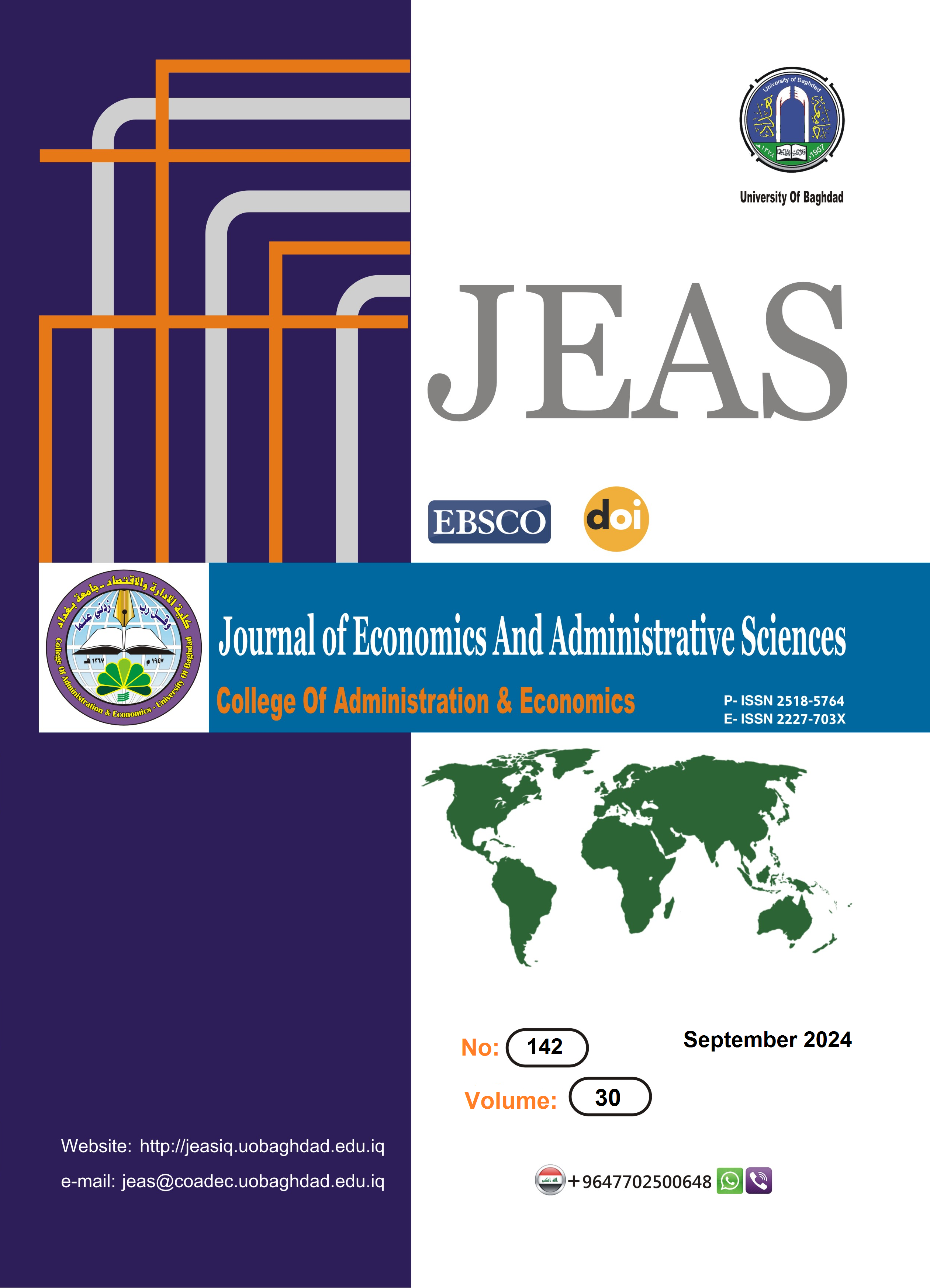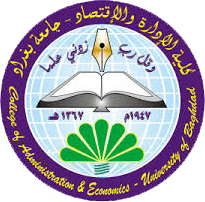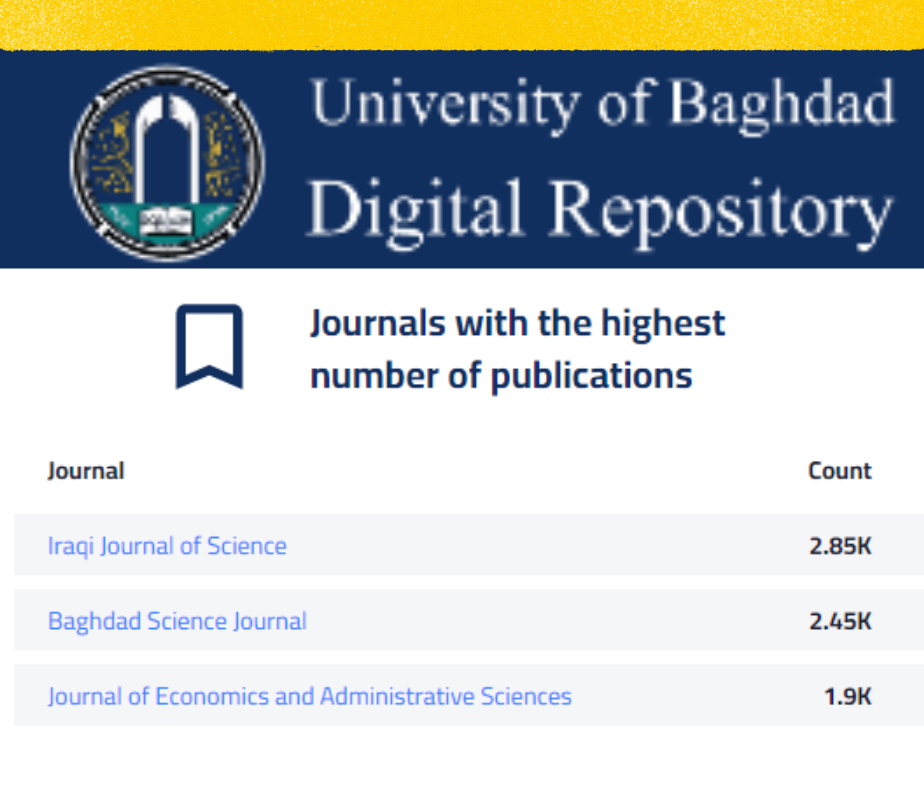The Relationship Between The Exchange Rate and The Price Elasticity of Demand for Some Imported Intermediate Goods in Iraq for The Period 2010-2021
DOI:
https://doi.org/10.33095/4fm1mw27Keywords:
Exchange Rate, Price Elasticity of Demand, Imports, Intermediate Goods.Abstract
The research provides several analyses, scientific evidence, and theoretical evidence, which clarify the relationship between the exchange rate in Iraq and the import of a group of intermediate goods for the period 2010-2021, as the research problem is represented by the problems and obstacles that caused a decline in the level of local production, and which contributed to an imbalance in output. GDP, and then an imbalance in the (non-oil) trade balance within the current account of the balance of payments. The research discussed the basic concepts of the exchange rate and its determination mechanism, price elasticity, intermediate goods and the relationship between these variables. After that, price elasticity coefficients were arrived at for three intermediate goods imported to Iraq: ordinary cement, resistant cement, and diesel oil for engines, according to the price elasticity formula, according to partial economic theory. The research aims to reveal the response of local demand for these goods through the effect of the exchange rate in Iraq, which translates the prices of these goods locally.
Moreover, a statement: Does the exchange rate in Iraq support local production by importing these goods? Is there a commitment to control border crossings and internal price control to prevent monopoly? What is the role of documentary credits as a tool for financing imports in Iraq? The research results showed that the exchange rate in Iraq needs to consider the necessity of these goods and their competition with local production.
Paper Type: Research Paper.
Downloads
References
References:
Abdullah, Y. Y. and Mohammed, R. M. (2023)." Estimating Demand for Imported Food Categories in Iraq" Journal of Economics and Administrative Sciences (JEAS), Vol.29, No.137, pp.146-159.
Adewuyi, A., Ogebe, J. and Oshota, S. (2021). “The Role of Exchange Rate and Relative Import Price on Sawn Wood Import Demand in African Evidence from Modified Heterogeneous Spend Data Methods”, The Journal of Economic Asy Mmet Rice, Vol.24, No.1, pp.231-246.
Akawee, O.M. and Abdullatif, E.M. (2023). "The Impact of Some Macroeconomic Variables on Banking Stability in Iraq'', Central European Management Journal", Vol.31, No.2, pp.866-882.
Al- Aside M. S. and Al- Kubaisi, L. Y. (2023). “Relationship Ship Analysis Between Monetary Policy and Financial Sustainability in Iraq for the Period 2015-2021’’, Journal of Economics and Administrative Sciences (JEAS), Vol.29, No.137, pp.112-130.
Al-Abbas, B. (2003). “Exchange Rate Policies,” Development Bridge Series, Arab Planning Institute, Kuwait, Vol. 23, No. 18, pp.1-42.
Alamuddin,, A. M. I. (1996). “Documentary Credits,” first edition, International Institute of Islamic Thought, Cairo.
Al-Anbaki, A. (2019). “The exaggerated exchange rate suppresses the local product... support for the importer,” 1st edition, Dar Al-Kutub and Documentation, Baghdad, Iraq.
Al-Barmani, A.M. A. (2019). “The phenomenon of commercial dumping in the Iraqi economy (causes and means of treatment),” Iraqi Journal of Economic Sciences, Vol.17, No.63, pp.1-13..
Al-Dagher, M. M. (2019). “Macroeconomics Theories and Policies”, 2nd edition, Baghdad, Thaer Al-Isami Foundation.
Al-Hayaly, A. G. K. J. (2022). “Industrial Development Strategy until 2030”, Journal of Economics and Administrative Sciences (JEAS), Vol.28, No.131, pp.150-166.
Al-Kharboutli, M. M. Y. (2017). “Determinants of Demand for Egyptian Imports of Consumer Goods,” Scientific Journal of Commercial Research and Studies, Vol. 31, No. 4, pp.1-50.
Al-Khayyat, A. H. (2022). “Analysis of the path of the Iraqi dinar exchange rate against the US dollar and its relationship to some economic variables and the starting points of economic liberalization for the period 2004-2020,” International Journal of Economic Studies, Vol.21, No.5, pp 20-37.
Al-Omari, M. M. A. (2022). “Microeconomic Analysis”, first edition, Dar Al-Kutub and Documents - Baghdad.
Al-Sarini, A. M. A., and Al-Khadrawi, A. F. K. (2016) “International Economics”, 1st edition, Dar Fares Scientific, Egypt.
Al-Taie, G. S. M. (1999). “International Economy”, Dar Al-Kutub for Printing and Publishing - Mosul.
Al-Taweel, M. T., and Rashid, K. M. (2020). “The Implications of Reducing the Iraqi Currency Exchange Rate on Some Indicators of the Iraqi Economy,” Journal of Humanities and Natural Sciences, Vol. 2, No.10, pp.167-183
Avellan, L. (2005). “Essays on Multiple Exchange Rate Systems”, PH. D thesis, University of Maryland, USA.
Central Bank of Iraq - General Directorate of Statistics and Research - Annual statistical bulletins from 2004-2020
Central Bank of Iraq - General Directorate of Statistics and Research - “Annual Monetary Policy Report”, 2020-2021.
Das, Z. O. (2021). “Inequality and the Import Demand in Turkey”, Istanbul Journal of Economics, vol.71, No. 2, pp. 395-410.
Dilts, D. A. (2004). “Introduction to Microeconomics”, Indiana, overdue University - Fort Wayne.
Gustafson, K. (2022). “What are Intermediate goods and how you can account for them”, https:// quickbooks.intuit.com
Hamilton, A. (2018). “Understanding Exchange Rates and Why They are Important” Reserve Bank of Australia Bulletin.
Hussein, S. A. and Hamdan, A. A.(2020), " The Role of Fiscal and Monetary Policy in Stimulating Circular Economy in Iraq", Firenze University Press, Vol.20, No2. pp125-145.
Intermediate goods, (2023). http://www.vedantu.com
Krianin, M. (2007). “International Economics and Policy Introduction,” Arabization: Dr. Muhammad Ibrahim Mansour and Dr. Ali Masoud Attia, Al-Marikh Publishing House, Kingdom of Sausdi Arabia.
Kutlu, S. (2013).” Changes in Exchange Rates and the Balance of Trade: Alierature Survey with reference to Turkey’s Foreign Trade”, Ataturk Universities Iktisadive ldari Bilimler Dergisi, Vol. 27, No.2, pp124-141.
Li, Y., Miao, Z. and Tuuli, M. (2022). “Exchange Rate Volatility and Import of Intermediate Input Evidence from Chinese Firms”, International Review of Economics & Finance, Vol.82, No. 3, pp.120-134.
Luther, D. (2022). “Intermediate Goods Defined’’, www.wallstreetmojo.com
Mahmoud, M. H., and Mirza, A. K. (2017). “Method of financing private sector imports and the Iraqi exchange market,” https://Iraqi Economists Network.
Majeed, O. H. (2023). “The Food Gap of Most Important Agricultural Products in Iraq for the Period 2003-2020 and Ways to Face It,” Journal of Namibia Studies, Vol.33, No.2, pp.1038-1049.
Ministry of Planning / Central Bureau of Statistics - Department of Foreign Trade - “Import Reports for the Years 2010-2021.”
Ministry of Planning/Central Bureau of Statistics, Directorate of Foreign Trade Statistics, Import Structure 2010-2021.
Ministry of Planning/Central Bureau of Statistics, Directorate of Foreign Trade Statistics (2019), “Imports Report 2018.”
Mishkin, F. S. (2013). “The Economics of Money, Banking, and Financial Markets” Ed.2, U.S.A.: Columbia University.
Mishkin, F. S. (2016). “The Economics of Money, Banking, and Financial Markets”, Ed.3, U.S.A.: Columbia University.
Pindyek, R. S. and Rubinfeld, D. L. (2013). “Microeconomics”, Eighth Edition, The Pearson Series in Economics, USA.
Rahim, S.S. and Ali. S. N. (2021). “The Role of Iraqi Trade Policies in Stimulating Productive Sectors to Grow for the Period (2003-2019) an Analytical Study in Light of the Malaysian Experience”, Journal of Economics and Administrative Sciences (JEAS), Vol.27, No.123, pp.132-151.
Ranjbar, H., Mohammadi H. M. and Mirzaii, V., F. (2023). “Measuring Price and Income Elasticity of Demand Function of the Iranian Imports”, Iranian Economic Review, University of Tehran Press, Vol.32, No. 1, pp.159-180.
Republic of Iraq - Ministry of Planning - Central Bureau of Statistics - Directorate of National Accounts, “Commodity Balances”, for several years from 2016-2020.
Republic of Iraq - Ministry of Planning - Directorate of Foreign Trade Statistics, (2020). “Iraq’s Exports in 2020”
Republic of Iraq- General Secretariat of the Council of Ministers (2018). “Instructions No. (3) of 2018, Instructions for the formations of the Border Ports Authority and their tasks.”
Salvatore, D. (2006). “Microeconomics”, Shaum’s out lines, Fourth Edition, Fordham University, New York, USA.
Sarawa, B. (2018). “Commercial dumping in light of the provisions of the National Products Protection Law,” Journal of Law - Al-Mustansiriya University, Vol.12, No.11, pp. 36-51.
Sasaki, Y., Yoshida, Y. and Otsubo, P. K. (2022). “Exchange Rate Pass- Through to Japanese Prices: Import Prices, and the Core CPI”, Journal of International Money and Finance, Vol.123, No.3, pp.455-468.
Shamkhi, M.K., Ahmed, D.A. and Majeed, O.H. (2022). "The Effectiveness of the Manufacturing in Destroy in Iraq", Materials Today: Proceedings ", Vol.60, No.3, pp.1223-1228.
Shiha, O. (2015). “A Partial Analysis of Egypt’s Demand for Imports of Intermediate Goods,” Journal of Development and Economic Policies - Arab Planning Institute, Vol.18, No.1, pp. 7-42.
Silva, A.D.B. and Hidalgo, A.B. (2020)." Price Elasticity in Import Demand Equations Considering Product Quality: Estimates for the Brazilian Economy (1996-2013), EconomyA Journal, vol.21, NO.3, pp 340-364.
Sobhi, M.M. And Awad, K. R. (2023), “The impact of exchange rate fluctuations on the trade balance in Iraq for the period 2004-2020,” Iraqi Journal of Economic Sciences, Volume 21, No. 78, pp. 209-238.
Suleiman, A. M. S. (2019). "The impact of exchange rate fluctuations on exports and imports in the Arab Republic of Egypt for the period 2010-2019", Scientific Journal of Commercial and Environmental Studies, Vol.10, No.2, Part One, pp 591- 636.
Tellaech, J.R. and Mexico, El- C. (2019). “Import Demand for Intermediate Goods in Mexcico: 1993-2018”, Universidad Nacional Autonoma de Mexico, vol.2, NO.3, pp.1-24.
Published
Issue
Section
License
Copyright (c) 2024 Journal of Economics and Administrative Sciences

This work is licensed under a Creative Commons Attribution-NonCommercial-NoDerivatives 4.0 International License.
Articles submitted to the journal should not have been published before in their current or substantially similar form, or be under consideration for publication with another journal. Please see JEAS originality guidelines for details. Use this in conjunction with the points below about references, before submission i.e. always attribute clearly using either indented text or quote marks as well as making use of the preferred Harvard style of formatting. Authors submitting articles for publication warrant that the work is not an infringement of any existing copyright and will indemnify the publisher against any breach of such warranty. For ease of dissemination and to ensure proper policing of use, papers and contributions become the legal copyright of the publisher unless otherwise agreed.
The editor may make use of Turnitin software for checking the originality of submissions received.













 How to use the OJS system
How to use the OJS system 










